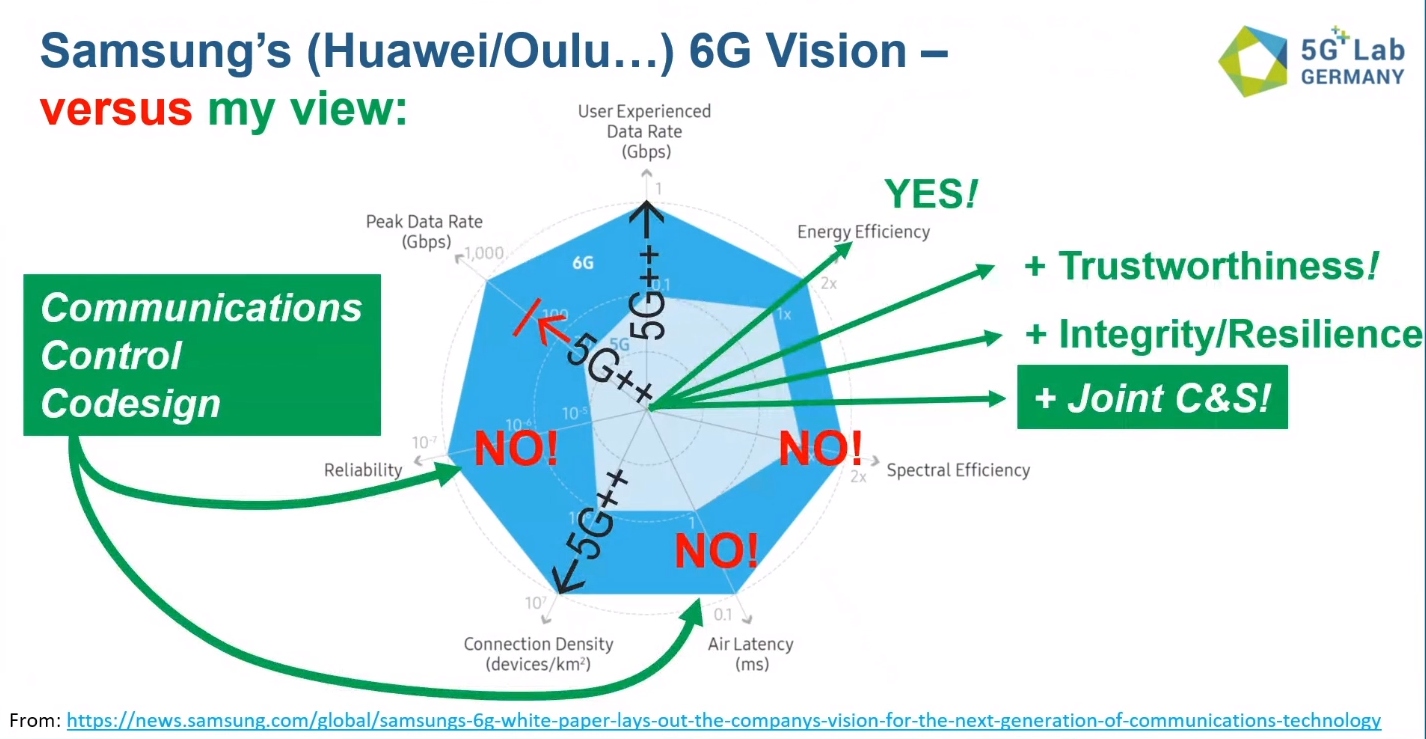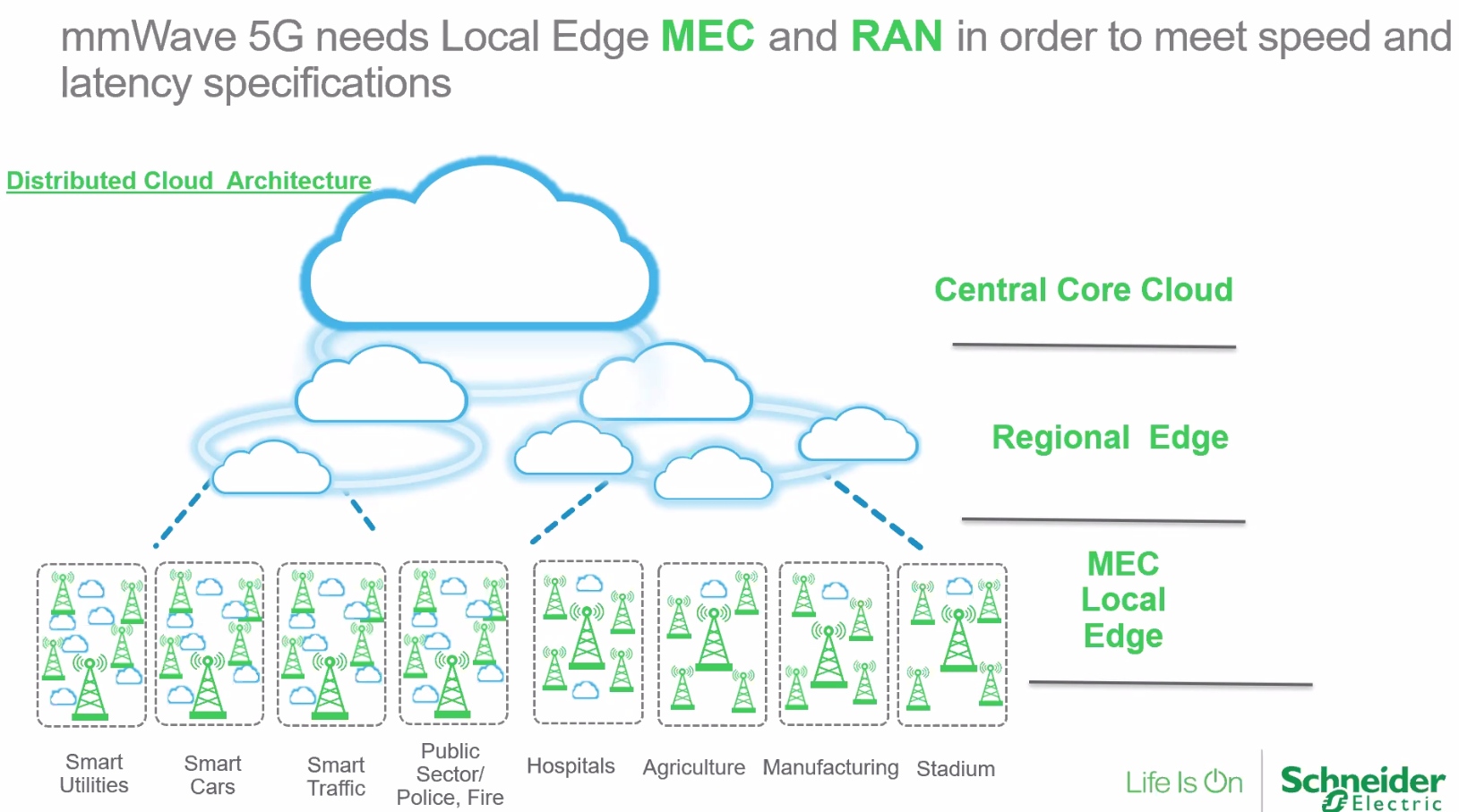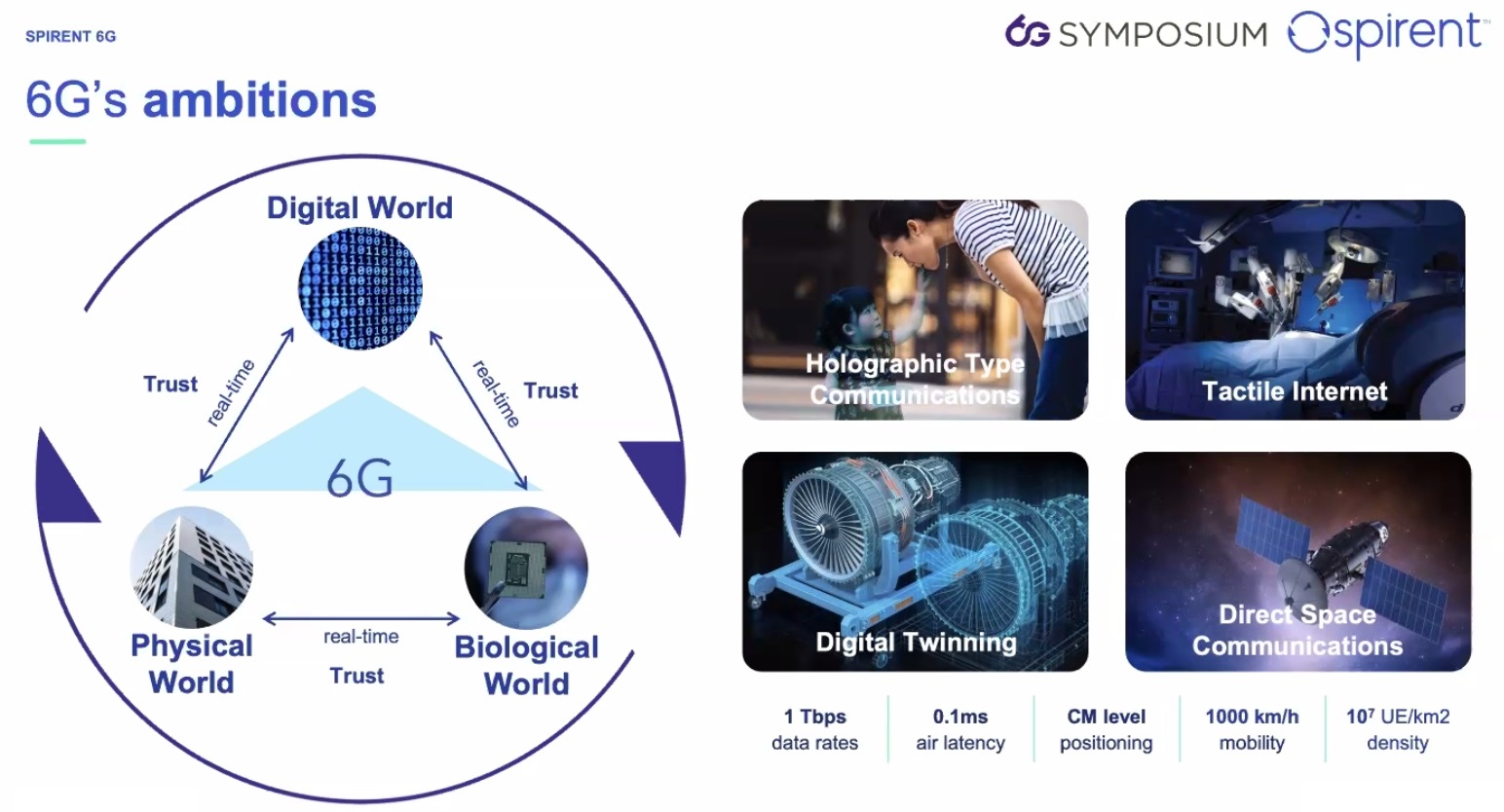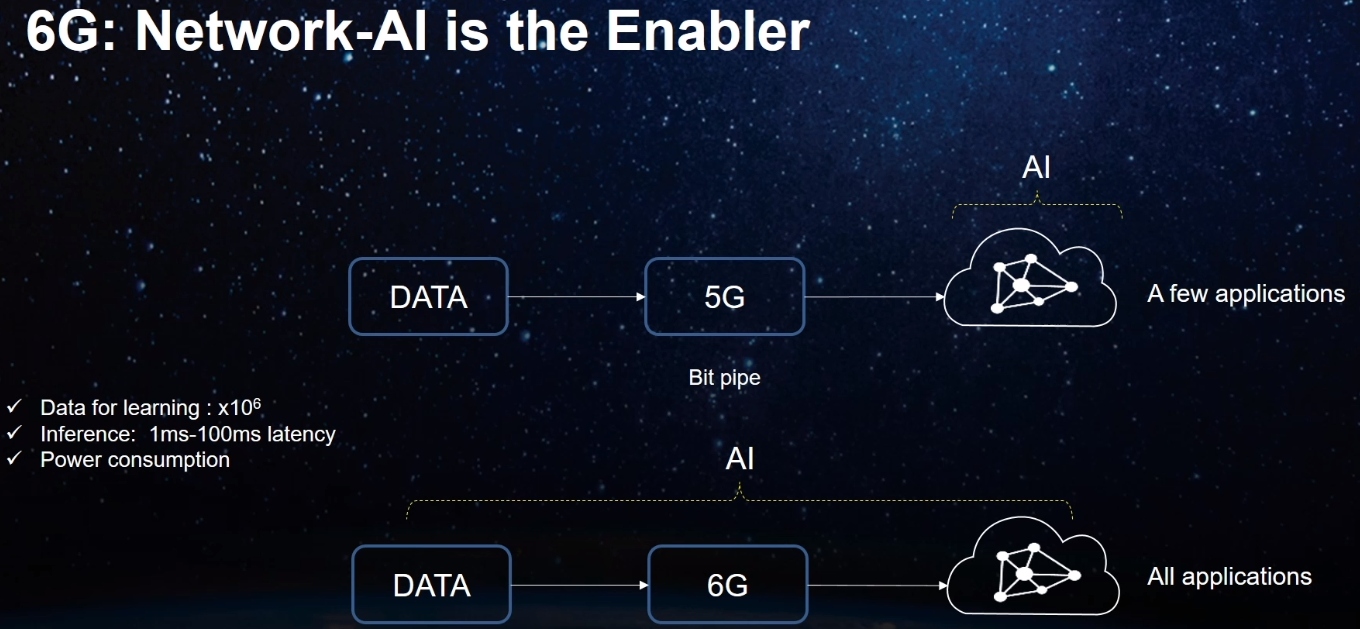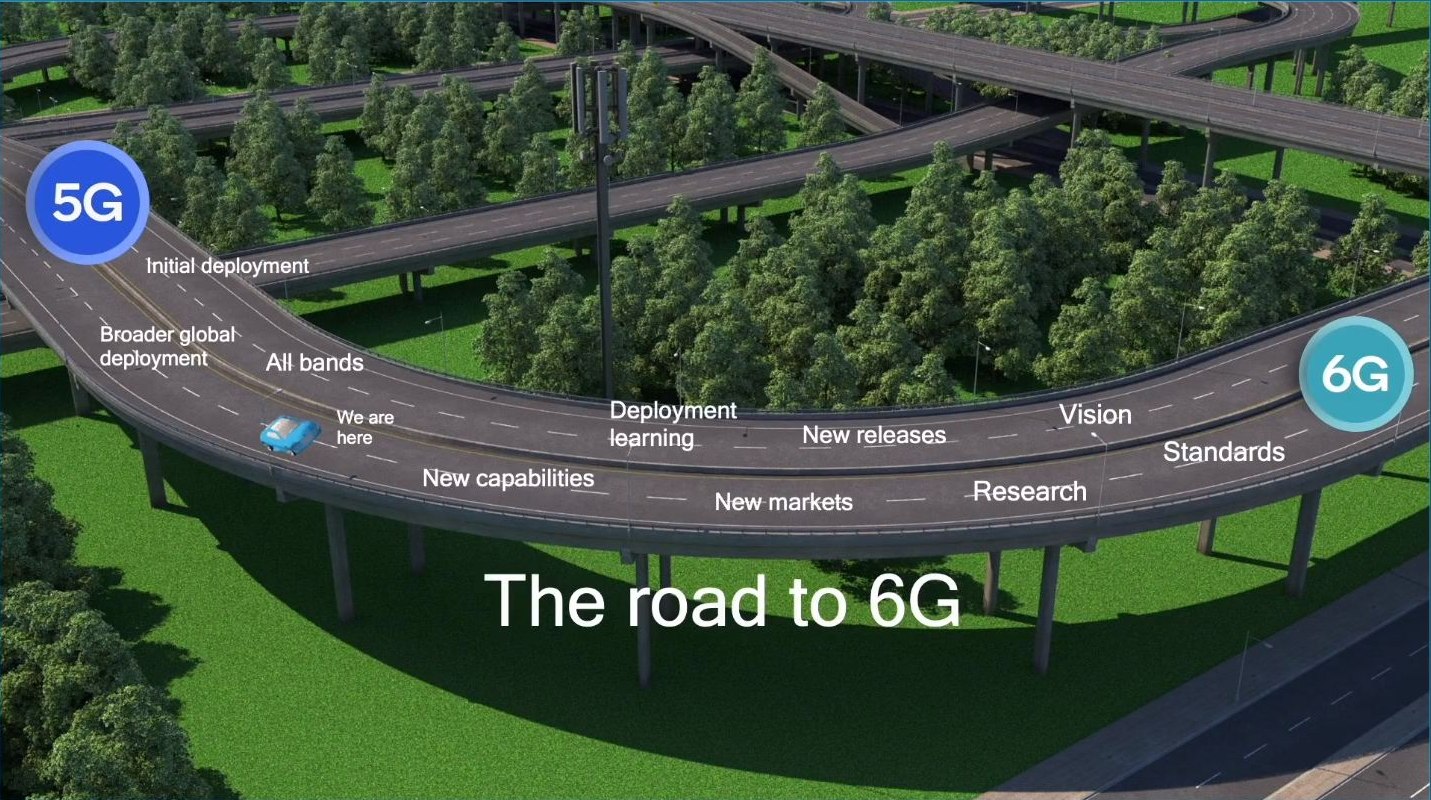Two conferences, held at the same time, covered mostly the same topics.
What do you do at 4 AM for three consecutive days? That’s easy. You attend two simultaneous virtual conferences: a 6G conference that also covers 5G and a 5G conference that also covers 6G.
On May 4 and 6 2021, I attended the 6G Symposium, which also addressed many 5G topics. On May 5, I attended the IEEE 5G++ Summit Dresden, which included much talk of 5G. Both conferences also touched on beyond 5G (B5G), which will add features to 5G beyond 3GPP Release 17. Think “5G Advanced.” With so many common topics, these conferences could have been one, or at least not conflict in time.
The three-day 6G Symposium did cover topics skipped in the 5G++ Summit. For example, the 6G Symposium spent the middle day covering regulatory issues and telecom policy. I skipped that to attend 5G++. Even so, there was plenty in common. As I typed this article, the 6G Symposium released videos of all sessions on YouTube. Click here for a landing page. The 5G++ Summit sessions are not yet available.
Several themes cut across the two conferences. The strongest being that 5G is for businesses and 6G will be for consumers. Indeed, a recent report from Ericsson shows that consumers await “Seventy percent are dissatisfied with the availability of innovative services and expect new applications making use of 5G.” Later enhancements to 5G, and especially 6G, will impress consumers.
“5G is for industry. 6G will be for consumers,” said Prof. Gerhard Fettweis, Technische Universität Dresden at both conferences. In Figure 1, Fettweis lays out his vision of 6G compared with industry players (green).
Figure 1. Prof. Gerhard Fettweis has a differing opinion from Huawei and University of Oulu on 6G networks.
We’re hearing considerable talk about private 5G networks for industry. Andreas Mueller of Bosch and the 5G Alliance for Connected Industries and Automation (5G-AICA) chair spoke at the 6G Symposium about the company’s private 5G network deployed at a factory. Bosch was an early adopter of a 5G private network, with Mueller giving a presentation at the 2018 Brooklyn 5G Summit. 5G is proving to be about connecting machines, which will accelerate with 3GPP Release 16’s specifications for URLLC and Release 17’s focus on IoT.
At the 5G++ Summit, Andreas Pauly, Rohde & Schwarz discussed how the company developed a private 5G network for automation. The network uses 5G picocells that cover an area of 1500 m². The network acquires data from machines and downloads at a data rate of 15 Mb/sec with 24 msec latency.
Fettweis at the 5G++ Summit claimed that consumers don’t care about 5G’s 1 msec latency that we’ve heard about for several years. “We overdesigned the network,” he claimed. “We can relax the latency requirements and lower costs to consumers.” We heard echoes of this at the 6G Symposium from Keysight’s Roger Nichols and Mischa Dohler, King’s College London.
The cloud divides
Although 6G radio is still up in the air, there’s plenty of talk about wired 6G networks. Perhaps you’ve heard that 5G will be the dawn of edge computing, which purveyed through both conferences. Most of the talk about moving computing power closer to the user revolves around latency. Moving computing from the cloud to the edge might also cut costs. Why? Because the shorter distance from the user to the data processing means less transport, which costs money and uses more energy with cloud computing. Figure 2, from Schneider Electric’s Steven Carlini, shows how cloud computing might segment into clusters.
Figure 2. Steven Carlini of Schieder Electric expects cloud computing to move out of the cloud and onto the network edge.
Moving data processing to the network edge also means more hardware and software locations. As a result, we’ll see computing clusters, which Heikki Hämmäinen, University of Aalto called “cloudlets.” That, combined with radios running at frequencies well over 100 GHz, will bring some computing to the radio, with more computing located in Open RAN distributed units, perhaps located near towers. Hardware accelerators will quicken computations but will increase cost.
Not just sight and sound
At both conferences, we heard that 6G will connect biological, digital, and physical worlds (Figure 3). Sensing will go beyond IoT and IIoT. For example, we could use a personal radar to sense the presence of people and objects. Indeed, there’s talk that 6G could take advantage of existing or new resource blocks to transmit chirps between cellular transmissions. In effect, we could simulate touch and holograms could produce 3D images of people who appear to be in our presence. Think Princess Leia projecting from R2D2. Those applications would impress consumers.
Figure 3. Stephen Douglas of Spirent Communications highlighted how 6G will connect the digital, biological, and physical worlds.
It’s the app, not the packets
From the early days of 5G research, talk began to shift from purely technology to business use cases. That will continue with 5G, B5G, and 6G. Applications and features discussed include holograms, sensing, and the haptic internet. Several speakers emphasized the need not only for designing 6G around use cases, but for using AI/ML to do it.
“6G will need AI to design networks and move traffic,” said Alex Resnik, ETSI and Azimeh Sefidcon, Ericsson at the 6G Symposium. AI will cover from radios to networks. It will handle signal processing at the radio and will let radios adapt to changing channel conditions. Furthermore, AI will be used to optimize networks from end to end (Figure 4), with maximizing the user experience as the overall goal. 6G could use AI to find the air interface and to write the underlying network software. “6G will revolutionize AI,” said Wen Tong, Huawei Wireless at the 5G++ Summit.
Some say that user experience and end-to-end performance will replace KPIs as the measure of network performance. Could that happen? Will we no longer quantify network performance in terms of dropped packets and signal quality? Won’t engineers still need to develop products that comply with industry and regulatory standards?
At the 5G++ Summit, Guido Weissbrich, Vodafone Germany spoke of logic-inspired intelligence, which he called a “paradigm shift in computing” where neural networks and deep learning begin to take on human characteristics. “6G will deliver this intelligence” where networks take real-world data — lots of it — to fine tune coefficients and make inferences. Weissbrich said such network-based intelligence will move us from the cloud era to the AI era. The concept of networks beginning to make inferences the way humans do is not new. At the 2019 Brooklyn 5G Summit, NYU professor Ted Rappaport explained that at terahertz frequencies, data rates begin to reach those of the human brain. Such a distributed computing network could lead to the age of the intelligence service provider. “We will communicate with intelligence, not with bits,” said Weissbrich.
Look, up in the sky
Both conferences featured sessions on satellite communications. We heard that 6G will incorporate both terrestrial and satellite communications. To some extent, that’s already happening through Starlink, a network of low-Earth-orbit satellites launched by SpaceX.
What about the radio?
5G New Radio brought technologies such as mmWave, phased arrays, and orthogonal frequency division multiplexing (OFDM) to cellular radios. Will we need a 6G NR? Probably, especially if 6G adds higher frequencies to the mix.
“5G is not good enough,” exclaimed Sunghung Choi, Samsung at the 5G++ Summit’s hardware and wireless track. Choi suggested what he called “XDD,” a combination of FDD and TDD, as a candidate technology for 3GPP Release 18, what he called “5G Advanced.” Because 5G NR uses TDD, radios can’t upload and download at the same time the way they can with FDD. (TDD was chosen for spectral efficiency in 5G NR.) With XDD, some bandwidth could be used for uploads because downloads consume most of a radio’s time. Choi cited a problem: a small frequency gap, which could cause the download signal to leak into the upload channel. That will require some strong filtering or timing to alleviate.
As you can see, the two conferences overlapped on several topics. Not only that, but there was one image that appeared in both. It came from Qualcomm (Figure 5).
I look forward to both conferences in 2022, but not again at the same time.

